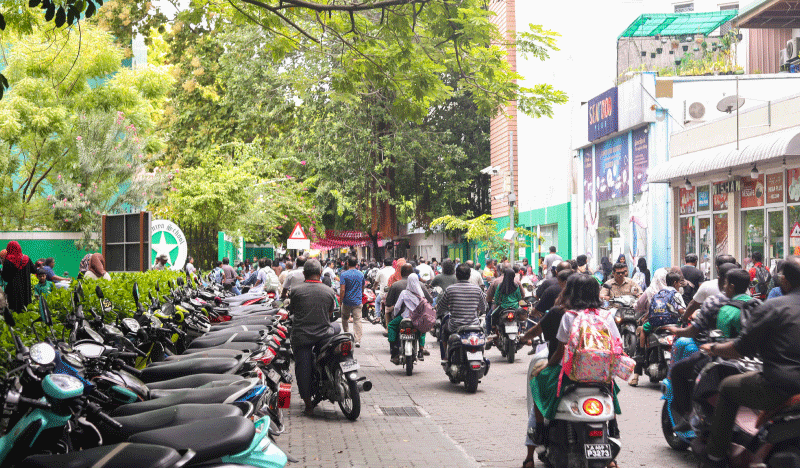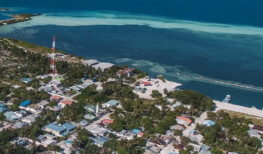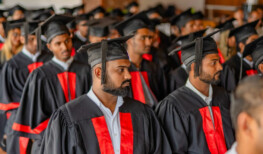Maldives’ Economy to Grow by 6.5% in 2023

Photo: MV+
Real GDP is expected to grow by 6.5% in 2023, with an average growth of 5.4% from 2024 to 2025. Still, challenges lie ahead, with increasing external and fiscal vulnerabilities posing economic risks, mainly if Maldives borrow at high costs during a global economic slowdown, says the World Bank in its twice-a-year update.
Released today as a companion piece to the latest South Asia Development Update, the Maldives Development Update titled Batten Down the Hatches presents a positive outlook for the country’s medium-term growth, primarily driven by a thriving tourism sector. However, the government is grappling with pressing fiscal challenges due to inflationary pressures linked to rising global commodity prices, increased capital spending and subsidies, and ongoing central bank financing of the budget deficit. These challenges require an urgent and robust fiscal adjustment and responsible debt management to ensure fiscal sustainability.
Despite expectations of reduced deficits, Maldives’ total debt is set to remain high at over 115% of GDP. The government raised Goods and Services Tax (GST) rates earlier this year. Still, more substantial and immediate commitments are necessary, especially since planned subsidy reforms for 2023 did not happen as anticipated.
Maldives needs to manage spending better while boosting revenue to ensure fiscal sustainability. Key reforms involve revamping programs like the Aasandha national health insurance scheme, streamlining subsidies for state-owned enterprises (especially fuel and food), and creating a robust public investment management system for sequenced and well-planned infrastructure investments. On the revenue front, the focus should be on broadening the tax base, tapping into domestic income sources, reducing informal economic activity, and fostering tax fairness.
“Maldives is expecting a strong growth of 6.5% this year. However, to ensure a more resilient economy in the future and to build on the recent reforms, prudent debt management and a fiscal adjustment with strengthened investment planning are needed in the context of tightened global conditions and already elevated fiscal deficits,” said Faris H. Hadad-Zervos, World Bank Country Director for Maldives, Nepal, and Sri Lanka. “While tourism will remain a primary engine of growth, Maldives stands to benefit by promoting more eco-tourism and fisheries development, prioritising limited infrastructure financing for remote areas, and encouraging more private sector investment in such a way that growth is inclusive, greener and resilient to climate and other shocks.”
The particular focus section of the report, Supporting Sustainable and Resilient Infrastructure, notes that Maldives has excelled in providing infrastructure services but relies heavily on public spending, often surpassing GDP growth. While the country has improved infrastructure across atolls, disparities remain, especially in piped water, sewage, and internet access compared to the capital Malé. Addressing these challenges requires better coordination, sustainable planning, transition to greener energy, mobilising more private capital, and enhanced public investment management to deal with fiscal constraints and climate change.
Meanwhile, the latest South Asia Development Update, Toward Faster, Cleaner Growth, forecasts regional growth to slow to 5.6% in 2024 and 2025 as post-pandemic rebounds fade and a combination of monetary tightening, fiscal consolidation, and reduced global demand weigh on economic activity.
Regional growth prospects are subject to downside risks due to fragile fiscal positions. Government debt in South Asian countries averaged 86% of GDP in 2022, increasing the chances of defaults, raising borrowing costs, and diverting credit from the private sector. The region could also be affected by a further slowdown in China’s economic growth and natural disasters made more frequent and intense by climate change.
Constrained by fiscal challenges, governments need more room to help their economies fully capitalise on the global energy transition. Though often seen as an additional burden for developing countries, for South Asia, the energy transition could present an opportunity for future growth and job creation. If it leads to more investments by firms, cuts air pollution, and reduces the reliance on fuel imports. Even with limited fiscal space, countries can encourage firms to adopt more energy-efficient technologies through market-based regulations, information campaigns, broader access to finance, and reliable power grids.
The energy transition will also significantly impact South Asia’s labour markets. Almost one-tenth of the region’s workers are employed in pollution-intensive jobs. These jobs are concentrated among lower-skilled and informal workers more vulnerable to labour market shifts. While the energy transition can help create new jobs, it could also leave some workers stranded in declining industries. The report recommends many policies to protect such workers, including providing better access to high-quality education and training, finance, and markets, facilitating worker mobility, and strengthening social safety nets.










